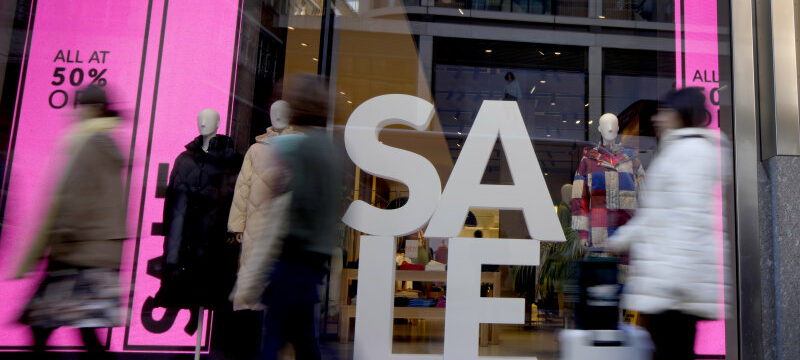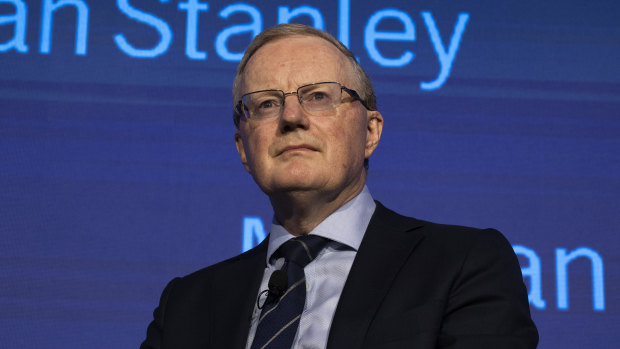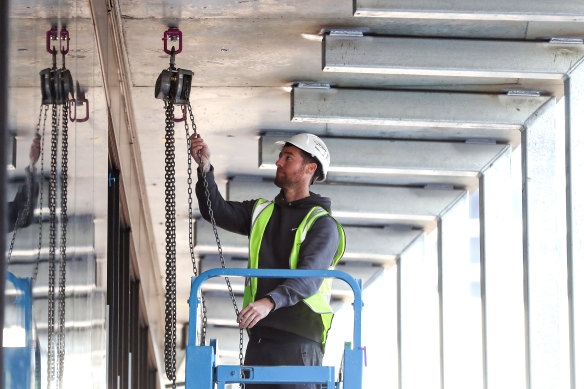Save articles for later
Add articles to your saved list and come back to them any time.
The Reserve Bank reckons it takes at least 12 months for the impact of an interest rate rise to work its way through the economy.
It was in May last year that the RBA famously started lifting rates, finding itself behind the eight ball when it came to dealing with the clear inflation pressures working their way through the economy.
Reserve Bank governor Philip Lowe and the rest of the board meet next week to discuss interest rates.Credit: Louise Kennerley
One year on, that first quarter percentage point increase – which took the cash rate to 0.35 per cent – is now fully embedded in the economy.
This means the monthly inflation figures released by the Bureau of Statistics on Wednesday, which showed a larger-than-expected fall in price pressures through May, should give the RBA board reason for a wide-ranging discussion about the next move on interest rates when it convenes next week.
The monthly figure, over which there are still doubts given its recent creation by the bureau, showed the annual rate falling from 6.8 per cent to 5.6 per cent. It’s been more than a year since the monthly inflation rate was so low.
The annualised quarterly rate of inflation slipped sharply from 5.6 per cent in the February-April period to 3.2 per cent in the March-May period. And in May last year, the one-month inflation jump was 1.1 per cent. In May just gone, it was flat.
There are obviously some wild shifts in prices still going on. For instance, the annual price of bread is rising at almost 13 per cent compared to 5.5 per cent in the 12 months to May last year. Similarly, dairy inflation is at 15.1 per cent – enough to curdle the freshest of milk.
Rent inflation is soaring, reaching 6.3 per cent. A year ago, it was 1.5 per cent.
Anyone who has copped a house or car insurance renewal notice would also know inflation in the financial sector is also biting hard. Higher interest rates are aimed at reducing overall spending, but if it only encourages people to drop ever-increasing insurance, then the RBA will add to long-term financial pain felt by those who cannot afford to protect key assets like their family home.
But there are also signs of price pressures easing. Clothing and footwear prices dropped 0.4 per cent over the past year compared to growing by 2.4 per cent in the previous 12-month period.
The costs associated with new homes have fallen by more than half over the past year in a sign higher interest rates are starting to work.Credit: Bloomberg
New housing purchase costs, which surged almost 20 per cent last year, have climbed by 8.3 per cent over the past year. There are clear signs the price pressures in the building sector are starting to ease, the best evidence the RBA’s rate rises are working.
The debate to be had by the Reserve Bank board now is really about the pace at which it wants to bring down inflation. Governor Philip Lowe has been clear saying the bank is trading off higher inflation in the near term against protecting the tremendous gains in employment long term.
Unemployment at 3.6 per cent. A record 14 million people in work. About 60 per cent of the 352,000 full-time jobs created over the past 12 months have gone to women.
Every extra interest rate increase beyond what is needed to bring down inflation in an orderly fashion puts those successes at risk.
In July last year, the bank took the cash rate to 1.35 per cent. The full impact of that higher cash rate is only now just feeding its way through every nook and cranny of the economy.
Judging the point at which it’s time to halt the interest rate pain on so many Australians may have already arrived.
Cut through the noise of federal politics with news, views and expert analysis from Jacqueline Maley. Subscribers can sign up to our weekly Inside Politics newsletter here.
Most Viewed in Politics
From our partners
Source: Read Full Article


